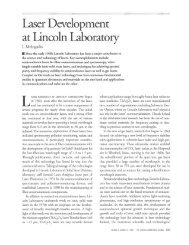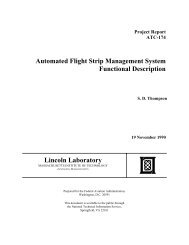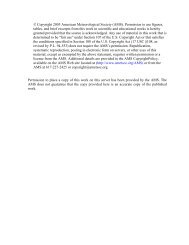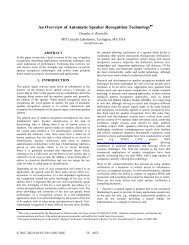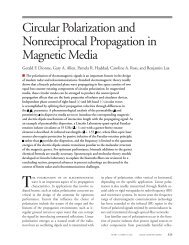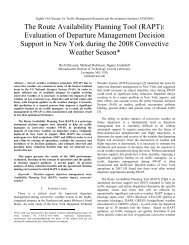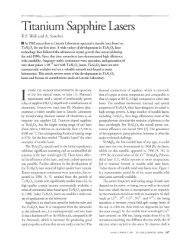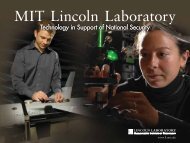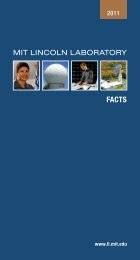Through-Wall Imaging Radar - MIT Lincoln Laboratory
Through-Wall Imaging Radar - MIT Lincoln Laboratory
Through-Wall Imaging Radar - MIT Lincoln Laboratory
You also want an ePaper? Increase the reach of your titles
YUMPU automatically turns print PDFs into web optimized ePapers that Google loves.
FiGurE 9. The metal rod being rotated by a human is<br />
clearly visible in these images. The imagery is in range vs.<br />
cross range with 20 dB of dynamic range shown.<br />
John E. PEabody, Jr., GrEGory L. CharvaT, JusTin Goodwin, and MarTin Tobias<br />
clearly shows the range versus cross-range imagery of a<br />
human target and the specular reflection of the rotating<br />
metal rod without noticeable blurring (every other frame<br />
is shown in Figure 9).<br />
Coherent background subtraction was used to image<br />
a pair of metal spheres with diameters of 2.5 cm located<br />
approximately 4 m down range from the array. One sphere<br />
remains stationary and the other rolls past, as shown in<br />
Figure 10. Multipath scattering from the spheres is noticeable<br />
as one sphere passes close to the other. The RCS of<br />
a 2.54 cm diameter sphere at the radar center frequency<br />
of 3 GHz is approximately –29 dBsm. The clear radar<br />
images of the stationary and moving spheres demonstrate<br />
the sensitivity of this real-time radar sensor.<br />
FiGurE 10. Here, one 2.5 cm diameter metal sphere is<br />
rolled past another in real time. The imagery is in range vs.<br />
cross range with 20 dB of dynamic range shown.<br />
VOLUME 19, NUMBER 1, 2012 n LINCOLN LABORATORY JOURNAL 67



